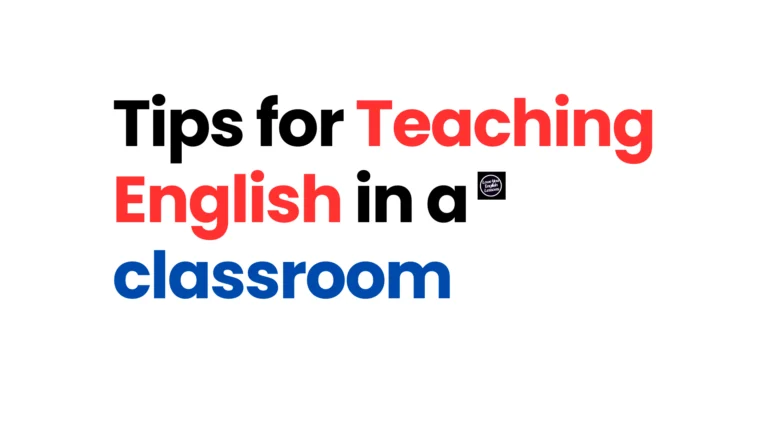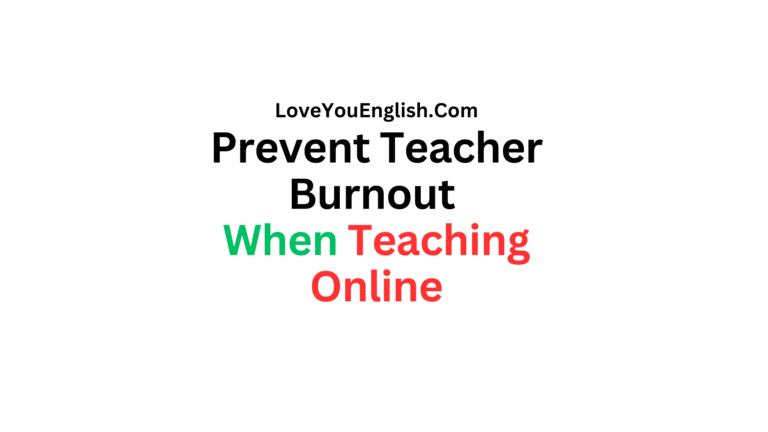Managing Discipline in Online ESL Lessons
Hello everyone,
Teaching English as a second language online can be challenging, especially when it comes to managing student behavior and discipline.
Unlike a traditional classroom setting, online lessons present unique obstacles when it comes to keeping students focused and engaged.
However, with the right strategies and techniques, you can create an effective and productive learning environment for your online ESL students.
1. Establish Clear Expectations and Rules
One of the most critical steps in managing discipline in online ESL lessons is to establish clear expectations and rules from the very beginning.
These rules should address important aspects of online learning, such as punctuality, participation, respect for others, and appropriate use of technology.
Make sure to communicate these rules clearly and consistently to your students and their parents or guardians.
Consider creating a visual aid, such as a PowerPoint slide or a handout, that outlines the rules in simple language.
This will help reinforce the expectations and serve as a reminder throughout the course.
2. Set the Tone from the Start
The first few minutes of an online lesson can set the tone for the entire session.
It’s essential to start each class on a positive note and establish a respectful and focused atmosphere from the onset.
Begin by greeting your students warmly and engaging them in a brief conversation or icebreaker activity.
This helps create a welcoming environment and allows you to connect with your students on a personal level.
Additionally, it sets the expectation that active participation is expected throughout the lesson.
You may want to read:
- Building Vocabulary: Creative Approaches and Activities
- Teaching English As a Second Language: A Comprehensive Guide
- 10 Fun Speaking Games for Language Learners
- Tips for Teaching English in a Classroom
- Explore the world of TEFL online teaching
3. Use Positive Reinforcement
Positive reinforcement is a powerful tool for encouraging desired behaviors and minimizing disruptive conduct in online ESL lessons.
When students exhibit good behavior, such as active participation, attentiveness, or respect for others, be sure to acknowledge and praise them.
Verbal praise, positive feedback, and small rewards (like stickers or virtual badges) can go a long way in motivating students and reinforcing positive behaviors.
This not only encourages the student being praised but also serves as a model for other students to emulate.
4. Implement Attention Signals
In an online environment, it can be challenging to regain students’ attention when they become distracted or disruptive.
Implement attention signals, such as a specific sound or visual cue, that students recognize as a signal to refocus their attention on the lesson.
Practice these attention signals with your students during the first few lessons, and consistently use them throughout the course.
This will help create a routine and make it easier to redirect students’ attention when needed.
5. Utilize Breakout Rooms Effectively
Many online platforms offer the ability to create breakout rooms, where students can work in smaller groups or individually.
These breakout rooms can be a valuable tool for managing discipline and engagement in online ESL lessons.
When students become disruptive or unfocused, consider moving them to a breakout room for a brief period. This temporary separation from the main group can help them refocus and reflect on their behavior without disrupting the entire class.
Alternatively, you can use breakout rooms to provide personalized attention or differentiated instruction to students who may be struggling or require additional support.
6. Involve Parents or Guardians
For younger students or those who require additional support, involving parents or guardians can be beneficial in managing discipline during online ESL lessons.
Encourage parents or guardians to be present (either physically or virtually) during the lesson to help monitor their child’s behavior and engagement.
Additionally, establish open lines of communication with parents or guardians.
Inform them of any persistent behavioral issues or concerns and collaborate with them to develop strategies to address these challenges.
Their support and involvement can make a significant difference in maintaining a positive learning environment.
7. Take Breaks and Incorporate Movement
Online lessons can be mentally and physically taxing for students, especially younger ones.
To help maintain focus and engagement, consider incorporating short breaks and movement activities into your lessons.
These breaks can be as simple as stretching exercises, dance moves, or other physical activities that allow students to move around and release energy.
Not only does this help them refocus, but it also promotes physical activity, which is essential for their overall well-being.
8. Vary Your Teaching Strategies
In an online setting, it’s easy for students to become disengaged or distracted, especially if the lesson format remains the same throughout.
To combat this, vary your teaching strategies and incorporate a mix of activities, such as multimedia presentations, interactive games, group discussions, and individual work.
By keeping your lessons dynamic and engaging, you’ll capture your students’ attention and minimize opportunities for disruptive behavior.
9. Foster a Sense of Community
Building a sense of community and belonging within your online ESL class can go a long way in promoting positive behavior and engagement.
Encourage students to interact with one another, share their experiences, and support each other’s learning.
Create opportunities for students to work in pairs or small groups, share their work with the class, and celebrate each other’s achievements.
This fosters a collaborative and supportive environment, which can positively impact student behavior and motivation.
10. Be Consistent and Patient
Managing discipline in online ESL lessons requires consistency and patience. Consistently enforcing rules and expectations, and following through with consequences, when necessary, is essential for maintaining a well-managed learning environment.
At the same time, it’s important to exercise patience and understand that some students may face unique challenges or require additional support in adapting to the online learning environment.
Remain calm and composed in the face of disruptive behavior and work collaboratively with students and their families to address any underlying issues.
Conclusion
Managing discipline in online ESL lessons can be challenging, but with the right strategies and techniques, you can create a productive and engaging learning environment for your students.
By establishing clear expectations, using positive reinforcement, implementing attention signals, involving parents or guardians, incorporating breaks and movement, varying your teaching strategies, fostering a sense of community, and exercising consistency and patience, you’ll be better equipped to handle disruptive behaviors and promote a positive online learning experience for all.
________________________
Check out these awesome teaching books I recommend:
Teaching and Learning in English Medium Instruction: An Introduction





